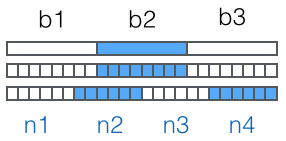Base64与URLEncode简介
Base64简介
Base64是最常见的一种基于64个可打印字符来表示二进制数据的方法.
Base64原理
- 首先,
Base64基于64个可打印字符, 这64个字符有A~Z,a~z,0~9,+,/
['A', 'B', 'C', ... 'a', 'b', 'c', ... '0', '1', ... '+', '/']
- 然后, 对二进制数据进行处理, 每3个字节一组, 一共是
3x8=24bit, 划为4组, 每组正好6个bit:

这样我们得到4个数字作为索引, 然后查表, 获得相应的4个字符, 就是编码后的字符串。Base64编码会把3字节的二进制数据编码为4字节的文本数据, 长度增加33%, 好处是编码后的文本数据可以在邮件正文、网页等直接显示。
- 另外, 如果要编码的二进制数据不是3的倍数, 最后会剩下1个或2个字节,
Base64会先用\x00在末尾补足后, 再在编码的末尾加上1个或2个=, 表示补了多少字节, 解码的时候, 会自动去掉。

由于=在URL、Cookie里面会造成歧义, 所以, 很多Base64编码后会把=去掉。因为Base64是把3个字节变为4个字节, 所以, Base64编码的长度永远是4的倍数, 因此, 加上=把Base64字符串的长度变为4的倍数,就可以正常解码了。
URL safe的Base64编码
由于标准的Base64编码后可能出现字符+和/, 在URL中就不能直接作为参数, 所以又有一种url safe的base64编码, 其实就是把字符+和/分别变成-和_
// 下面这段代码来自于JDK1.8中的 java.util.Base64
/**
* This array is a lookup table that translates 6-bit positive integer
* index values into their "Base64 Alphabet" equivalents as specified
* in "Table 1: The Base64 Alphabet" of RFC 2045 (and RFC 4648).
*/
private static final char[] toBase64 = {
'A', 'B', 'C', 'D', 'E', 'F', 'G', 'H', 'I', 'J', 'K', 'L', 'M',
'N', 'O', 'P', 'Q', 'R', 'S', 'T', 'U', 'V', 'W', 'X', 'Y', 'Z',
'a', 'b', 'c', 'd', 'e', 'f', 'g', 'h', 'i', 'j', 'k', 'l', 'm',
'n', 'o', 'p', 'q', 'r', 's', 't', 'u', 'v', 'w', 'x', 'y', 'z',
'0', '1', '2', '3', '4', '5', '6', '7', '8', '9', '+', '/'
};
/**
* It's the lookup table for "URL and Filename safe Base64" as specified
* in Table 2 of the RFC 4648, with the '+' and '/' changed to '-' and
* '_'. This table is used when BASE64_URL is specified.
*/
private static final char[] toBase64URL = {
'A', 'B', 'C', 'D', 'E', 'F', 'G', 'H', 'I', 'J', 'K', 'L', 'M',
'N', 'O', 'P', 'Q', 'R', 'S', 'T', 'U', 'V', 'W', 'X', 'Y', 'Z',
'a', 'b', 'c', 'd', 'e', 'f', 'g', 'h', 'i', 'j', 'k', 'l', 'm',
'n', 'o', 'p', 'q', 'r', 's', 't', 'u', 'v', 'w', 'x', 'y', 'z',
'0', '1', '2', '3', '4', '5', '6', '7', '8', '9', '-', '_'
};Base64工具类
- 在
Guava中有BaseEncoding类 - 在
JDK8中有专门的工具类java.util.Base64 - 在
JDK7中也有sun.misc.BASE64Encoder和sun.misc.BASE64Decoder两个类 - 在
Spring中, 也提供了一个Base64Utils, 它自动根据反射来决定是使用Java 8的java.util.Base64还是Apache Commons Codec的org.apache.commons.codec.binary.Base64 - 除了
JDK7, 其他的工具类中都有url safe的Base64编码方法, 而且JDK7中会产生换行符!
// guava 工具类的使用
public void testBase64() {
// 原串
String origin = "abc";
// encode
String encodeString = BaseEncoding.base64().encode(origin.getBytes());
// decode
String result = new String(BaseEncoding.base64().decode(encodeString));
// result = origin
Assert.assertEquals(origin, result);
}
// Spring 工具类的使用
public void testBase64() {
// 原串
String origin = "abc";
// encode
String encodeString = Base64Utils.encodeToString(origin.getBytes());
// decode
String result = new String(Base64Utils.decodeFromString(encodeString));
// result = origin
Assert.assertEquals(origin, result);
}
// JDK8 工具类的使用
public void testBase64() {
// 原串
String origin = "abc";
// encode
String encodeString = Base64.getEncoder().encodeToString(origin.getBytes());
// decode
String result = new String(Base64.getDecoder().decode(encodeString.getBytes()));
// result = origin
Assert.assertEquals(origin, result);
}
// JDK7 工具类的使用(解码时会抛出 IOException)
public void testBase64() {
// 原串
String origin = "abc";
// encode, 如果原串比较长, 这个方法得到的签名会有换行符, 所以最好不要用JDK7的这个工具
String encodeString = new BASE64Encoder().encodeBuffer(origin.getBytes());
// decode
String result = null;
try {
result = new String(new BASE64Decoder().decodeBuffer(encodeString));
} catch (IOException e) {
logger.error("Base64解码失败", e);
}
// result = origin
Assert.assertEquals(origin, result);
}URLEncode简介
URLEncoder和URLDecoder用于完成普通字符串和application/x-www-form-urlencodedMIME类型的字符串之间的相互转换
编码规则
application/x-www-form-urlencoded类型会按照如下规则进行字符串转换
- 字母(
a-z,A-Z), 数字(0-9), 点(.), 星号(*), 横线(-), 下划线(_)不变 - 空格(
)变为加号(+) - 其他字符变为
%XY形式,XY是两位16进制数值 - 在每个
name=value对之间放置&符号(这条规则跟编码没关系)
URLEncode工具类
JDK自带了两个工具类 URLEncoder和URLDecoder, 下面是用法
@Test
public void testURLEncode() {
String str = "*. -_~!";
System.out.println(str); // *. -_~!
String encode = URLEncoder.encode(str);
System.out.println(encode); // *.+-_%7E%21
encode = URLEncoder.encode(encode);
System.out.println(encode); // *.%2B-_%257E%2521
// 注意编码两次是不一样的
String decode = URLDecoder.decode(encode);
System.out.println(decode); // *.+-_%7E%21
decode = URLDecoder.decode(decode);
System.out.println(decode); // *. -_~!
}